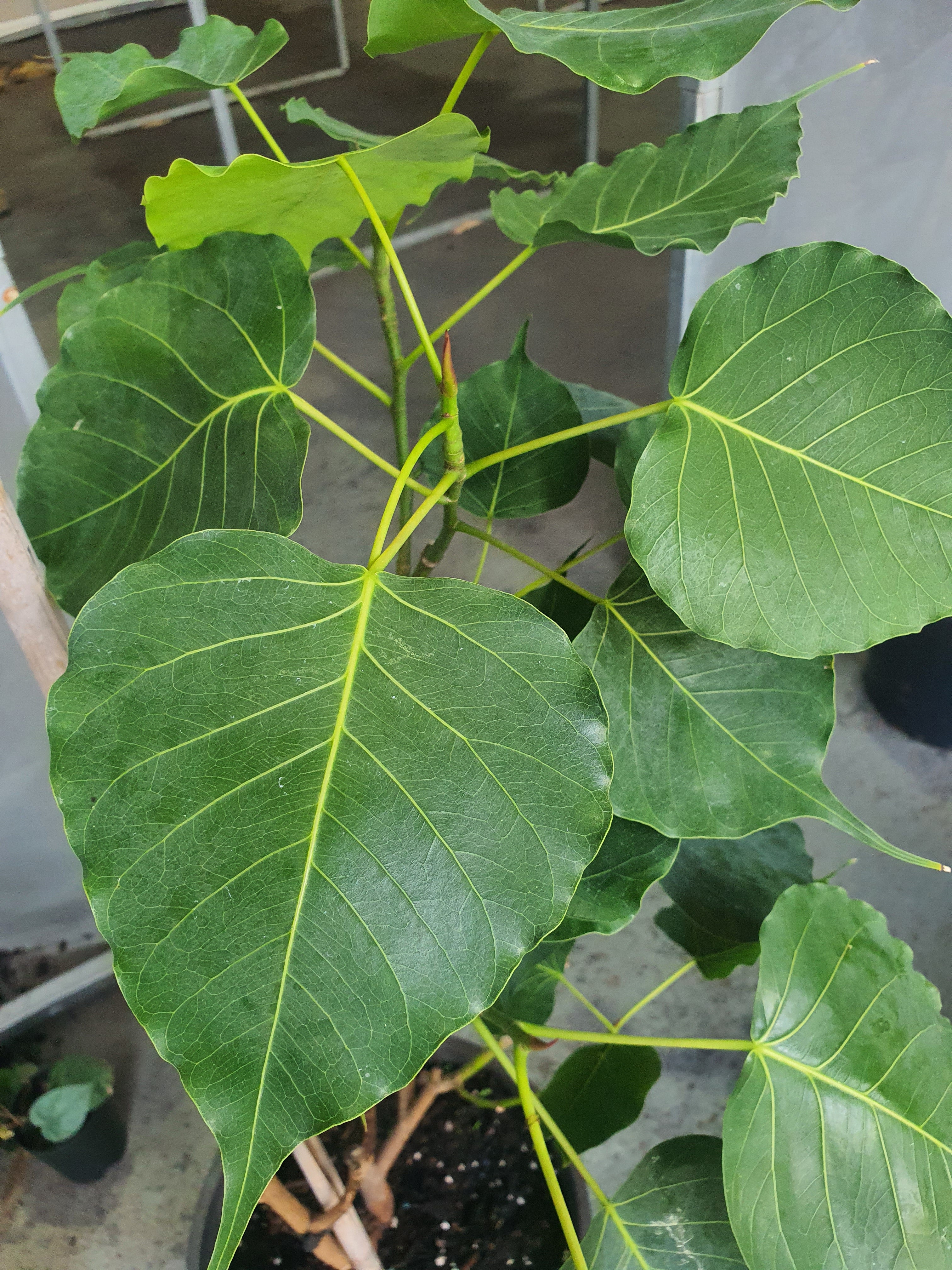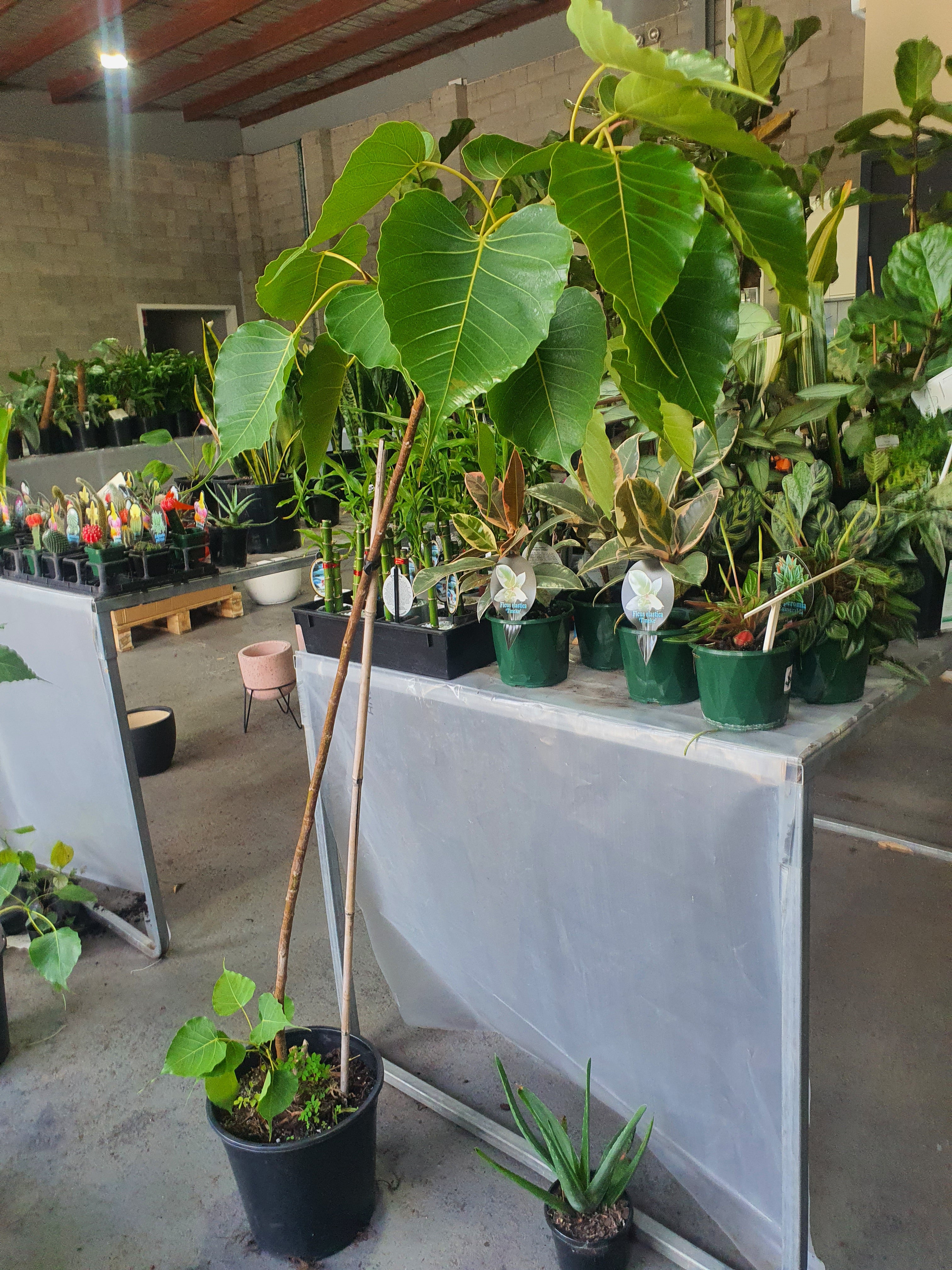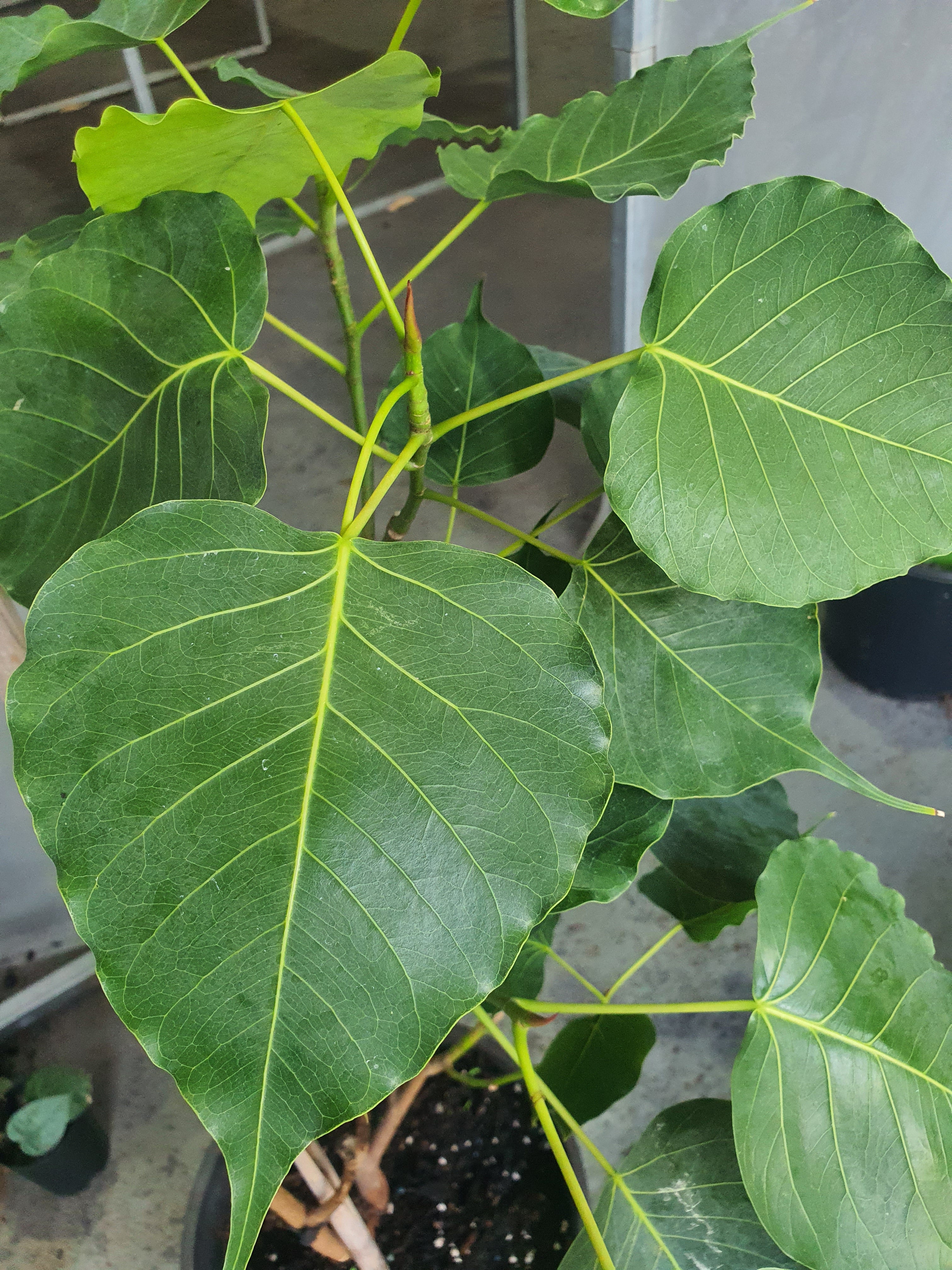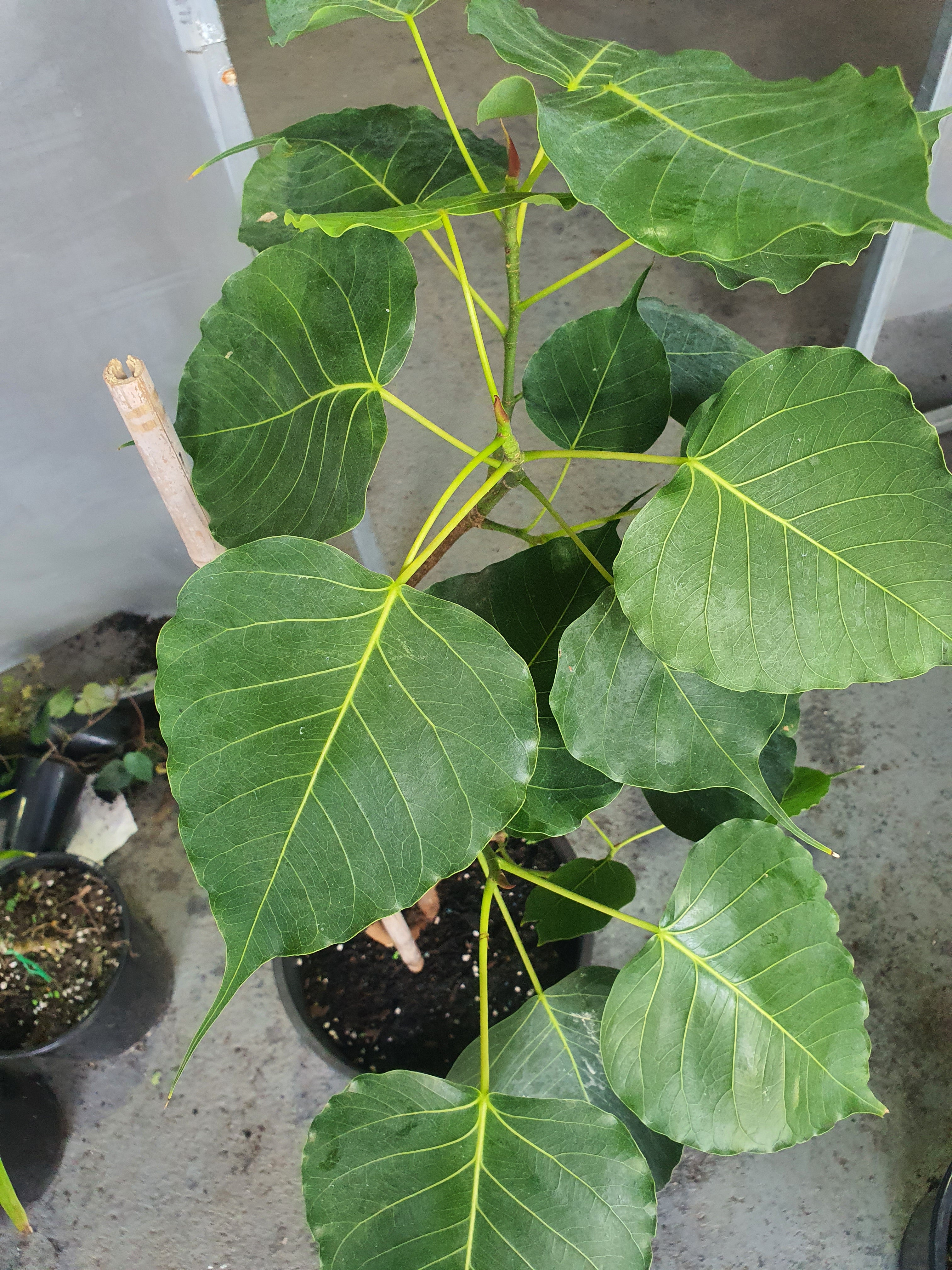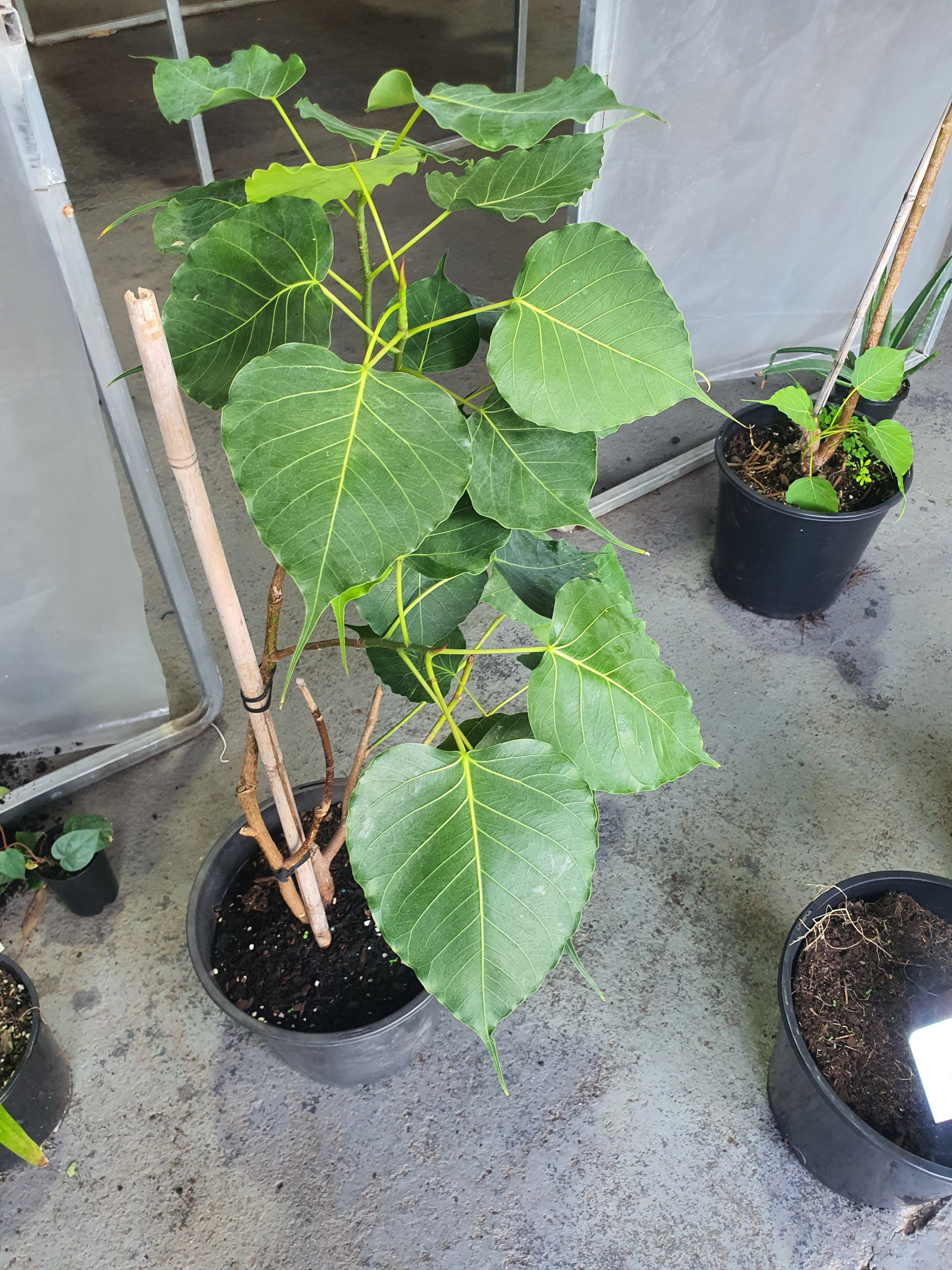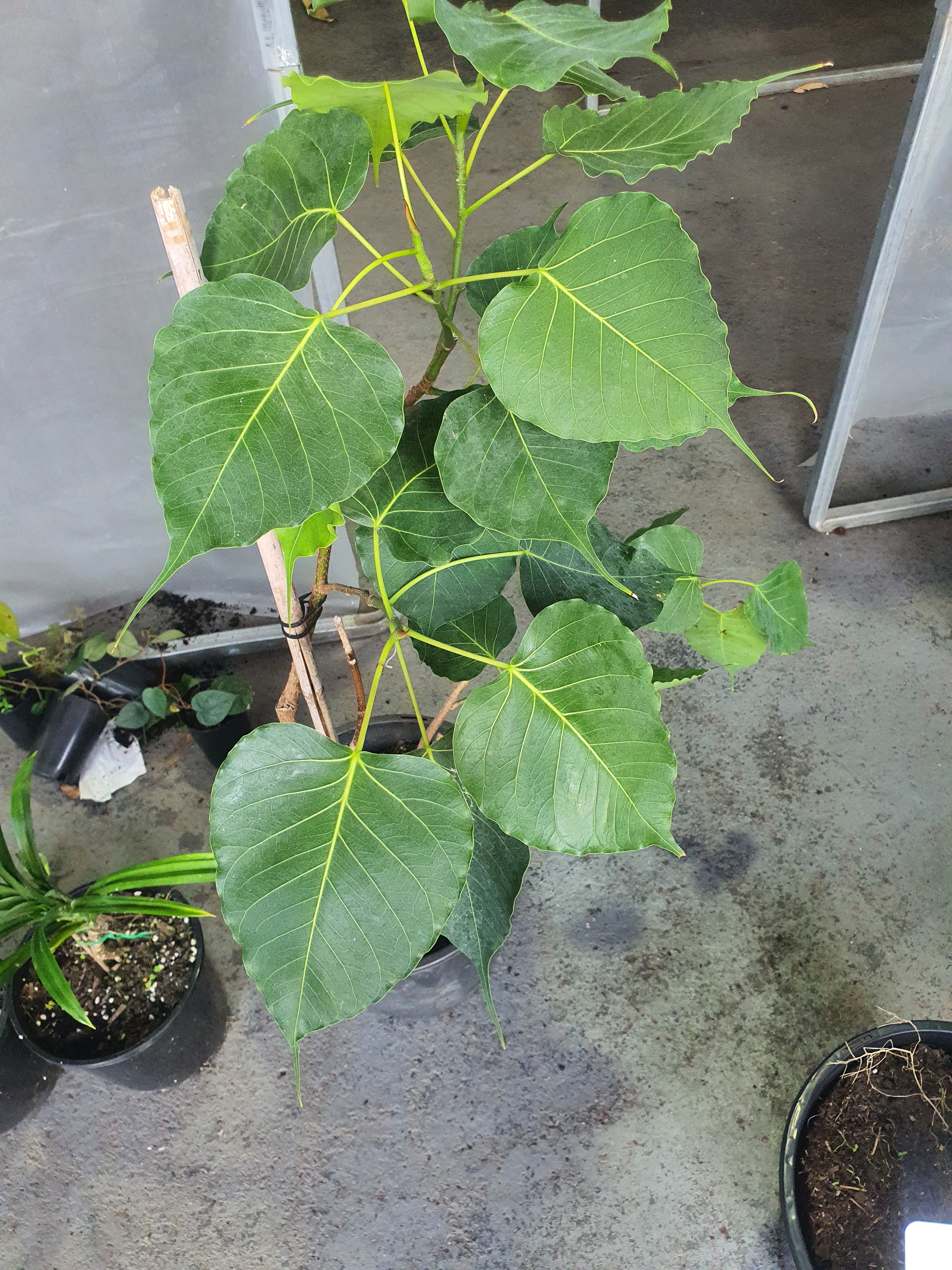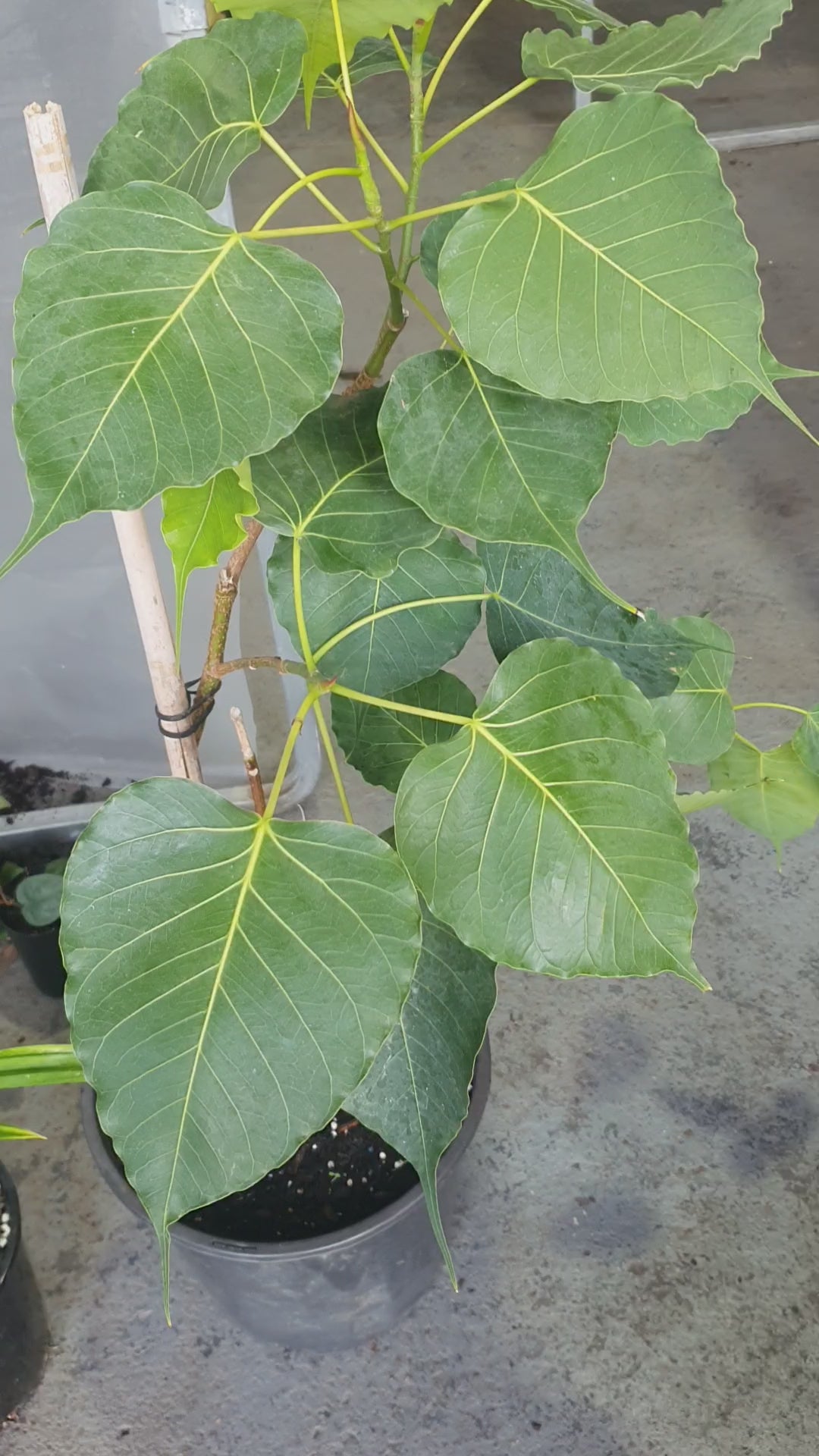Description
Peepal Tree for Home Garden
The Peepal tree, also known as the Sacred Fig or Ficus religiosa, is a boad deciduous tree native to the Indian subcontinent and Southeast Asia. It has a unique heart-shaped leaf with a long, pointed tip, which is mostly considered a symbol of spiritual growth. The tree is well-known for its sprawling canopy and aerial roots. Its bark is smooth and grey, and it produces small fig-like fruits, though these are mostly not as prominent as its leaves.
Growing Specifications:
- Height: 10–30 meters
- Spread: 12–20 meters (40–65 feet)
- Leaf Shape: Heart-shaped, long, and pointed tip
- Flowers/Fruits: Small, greenish, fig-like fruits
- Lifespan: Can live for several decades, often referred to as a "long-lived" tree.
Suitable Garden:
- Type of Garden: Ideal for large gardens, parks, or public spaces. It requires amble of space to spread its roots and branches, so it’s not suitable for small, confined spaces or urban backyards.
- Soil: Peepal trees thrive in well-drained, slightly acidic to neutral soil. It tolerates a kind of soil types but prefers moist, fertile ground.
- Climate: It is best suited for tropical and subtropical climates, although it can tolerate winters. It is drought-tolerant once established, though it does better with regular watering.
Features and Benefits:
- Cultural Significance: In many cultures, especially in Hinduism and Buddhism, the Peepal tree is sacred and is mostly associated with the Buddha’s enlightenment. Its leaves are symbolic of peace, prosperity, and spiritual wisdom.
- Air Purification: The Peepal tree is known for its ability to purify the air by absorbing carbon dioxide and releasing oxygen, making it a natural air purifier.
- Shade Provider: With its large canopy, it offers broad shade, making it a great tree for gardens and parks where people seek respite from the sun.
- Biodiversity Support: Its large leaves and fruits attract birds, squirrels, and insects, supporting biodiversity in urban or rural landscapes.
- Medicinal Uses: Various parts of the tree (leaves, bark, roots) are used in traditional medicine for treating a variety of ailments, like respiratory issues, digestive problems, and skin conditions.
Growing Requirements:
- Watering: Needs regular watering, especially in the first couple of years of growth. Once established, it can tolerate periods of drought but performs better with consistent moisture.
- Sunlight: Prefers full sun but can tolerate partial shade. It requires a more of light to thrive.
- Temperature: Thrives in warm tropical or subtropical climates with temperatures between.
- Soil: Prefers well-drained, fertile soil that is rich in organic matter.
- Spacing: Ensure proper spacing to allow the tree to spread its roots and canopy.
- Pruning: While it doesn’t require extensive pruning, regular removal of dead branches or leaves and aerial roots is necessary to maintain its shape and prevent damage to surrounding structures.
Why Choose Peepal Tree?
- Spiritual and Cultural Value: It’s deeply rooted in religious traditions, and most people plant it as a symbol of peace and spiritual growth.
- Air Quality Improvement: It is an excellent tree for enhancing air quality, especially in urban areas with high pollution.
- Shade and Aesthetic Appeal: Its large canopy and heart-shaped leaves provide beautiful shade and add visual appeal to any large or medium garden .
- Wildlife Support: The tree supports local wildlife, attracting birds and insects that contribute to the ecosystem’s health.
- Longevity: Being a long-living tree, it can last for several decades, making it an enduring symbol in the landscape

